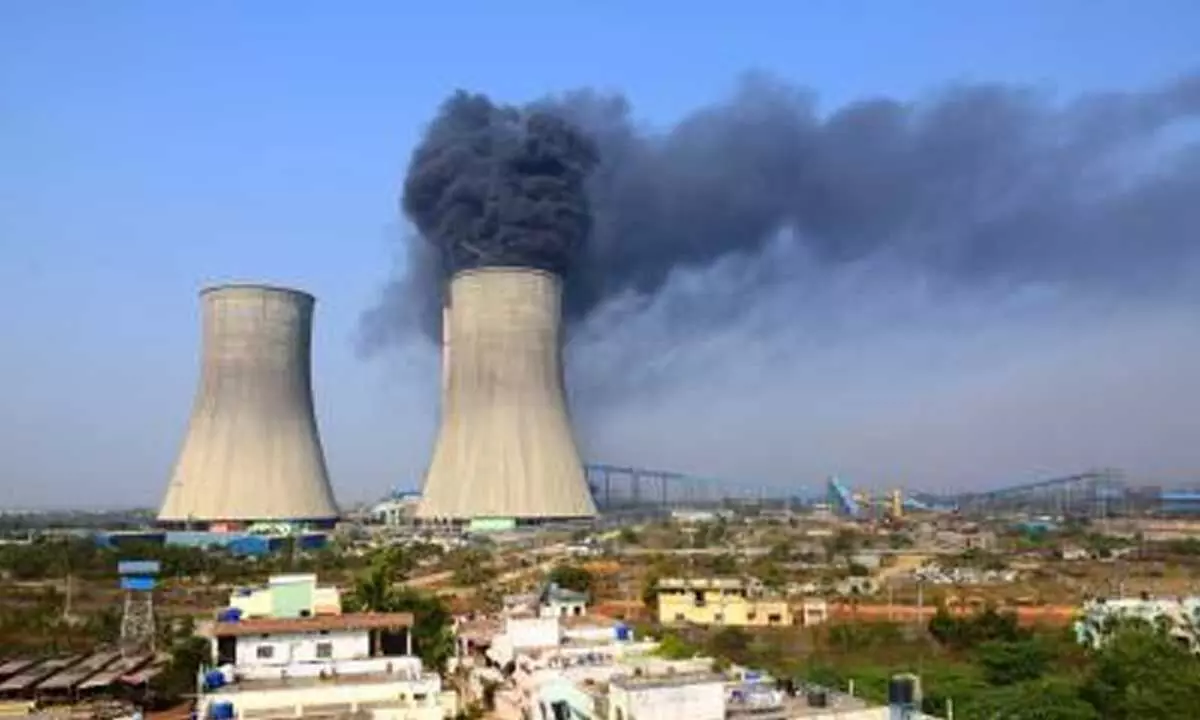Live
- They always want me to win, and now I feel lucky to have been offered a story like ‘Zebra’: Satyadev Kancharana
- ‘Democracy first, humanity first’: PM Modi in Guyana's parliament on two countries' similarities
- PKL Season 11: Telugu Titans register third straight win to top standings
- Is Pollution Contributing to Your COPD?
- NASA Unveils Underwater Robots for Exploring Jupiter's Moons
- Additional Central forces arrive in violence-hit Manipur
- AR Rahman and Saira Banu’s Divorce: Legal Insights into Common Issues in Bollywood Marriages
- 82.7 pc work completed in HPCL Rajasthan Refinery area: official
- Curfew relaxation extended in 5 Manipur districts on Friday
- Tab scam prompts Bengal govt to adopt caution over fund disbursement
Just In
Gasp! As 2023 dawns, Maharashtra set to choke on aerosol pollution


Gasp! As 2023 dawns, Maharashtra set to choke on aerosol pollution
As the worlds attention is riveted to the COP27 currently on in Egypt, it emerges that Maharashtra is likely to move from the �Orange Zone to enter the �Red Zone for aerosol pollution in 2023, sparking fresh concerns, researchers said here.
Mumbai: As the worlds attention is riveted to the COP27 currently on in Egypt, it emerges that Maharashtra is likely to move from the �Orange Zone to enter the �Red Zone for aerosol pollution in 2023, sparking fresh concerns, researchers said here.
The alarm signal is sounded in a study -- �A deep insight into state-level Aerosol pollution in India', by Kolkata's Bose Institute Associate Prof. Abhijit Chatterjee and his doctoral scholar Monami Dutta, released by ASAR as part of a project under the Simplifying Science Programme.
The study said that high aerosol amounts include particulate matter (PM2.5-PM10), comprising sea-salt, dust, sulphate, black and organic carbon.
"If inhaled, the toxic fumes can be harmful to peoples' health, with increased morbidity rate and decreased life expectancy. Aerosol Optical Depth (AOD) is the quantitative estimate of the aerosol present in the atmosphere and can be used as a proxy measurement of PM," said Chatterjee.
"The toxins are spewed into the air by 23 coal-based Thermal Power Plants (TPP) with 72 units, producing 23 GW of power. From these, only 14 units (4.5GW) have either installed pollution control technology, Flue Gas Desulphurisation or claim to be sulphur dioxide limit compliant till August 2022," said an official from the Central Electricity Authority.
A majority of the TPPs in Maharashtra are located in Nagpur, Amravati, Chandrapur, Akola, Jalgaon, Beed and Nashik.
Currently, said Dutta, Maharashtra falls in the �Orange Zone' which is a vulnerable zone with AOD between 0.4-0.5.
"The rising aerosol pollution is likely to push the AOD higher than 0.5 to enter the �most vulnerable' or �Red Zone'," said Dutta.
Explaining the value of the AOD range from 0 to 1.0, she said 0 indicates a crystal clear sky with maximum visibility and 1 shows a very hazy sky condition.
"AOD value below 0.3 (Green Zone) is safe, 0.3-0.4 (Blue Zone) is less vulnerable, 0.4-0.5 (Orange Zone) is vulnerable, while more than 0.5 (Red Zone) is highly vulnerable," Dutta said.
According to the study by Chatterjee-Dutta, the TPP in Maharashtra has affected air pollution the most in the past, and the TPP capacity is increasing due to the higher demand for electricity.
"If Maharashtra continues to install the TPP capacity as observed in the past, it will enter into the �Red Zone', with a series of health complications for the people of the state. The state can witness an AOD rise of around 7 per cent between 2019-2023," cautioned Chatterjee.
The duo's study identified the main sources of aerosol pollution with solid fuel burning and vehicular emissions besides the coal-based TPPs, in three phases -- 2005-2009, 2010-2014 and 2015, 2019.
The TPP's contribution to the emissions shot up from 31 per cent to 39 per cent in the period 2005-2019, mainly due to increase in capacity and depending on the TPP.
However, the contribution of solid fuel burning to aerosol pollution declined from 24 percent to 18 percent, and vehicular emissions remained constant at 14-15 percent during the same (2005-2019) period.
"Accordingly, Maharashtra needs to reduce its TPP capacity by 41 per cent (10 GW), and not allow any new TPPs to come up to return to the safe �Blue Zone' in public interest," the duo's study has recommended.
The findings of Chatterjee-Dutta were published in August 2022 in the peer-reviewed journal Elsevier, headquartered in Amsterdam, The Netherlands.

© 2024 Hyderabad Media House Limited/The Hans India. All rights reserved. Powered by hocalwire.com






